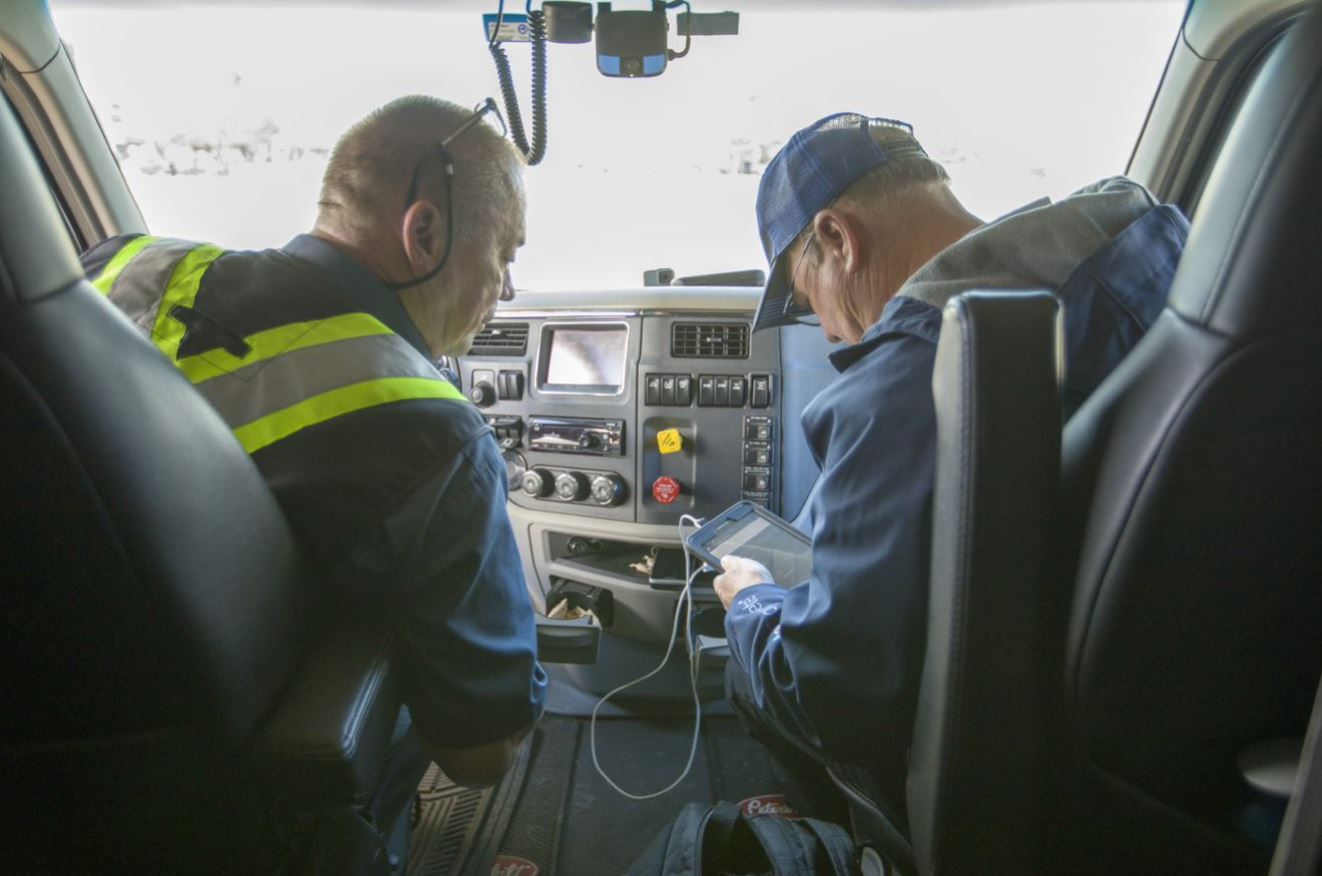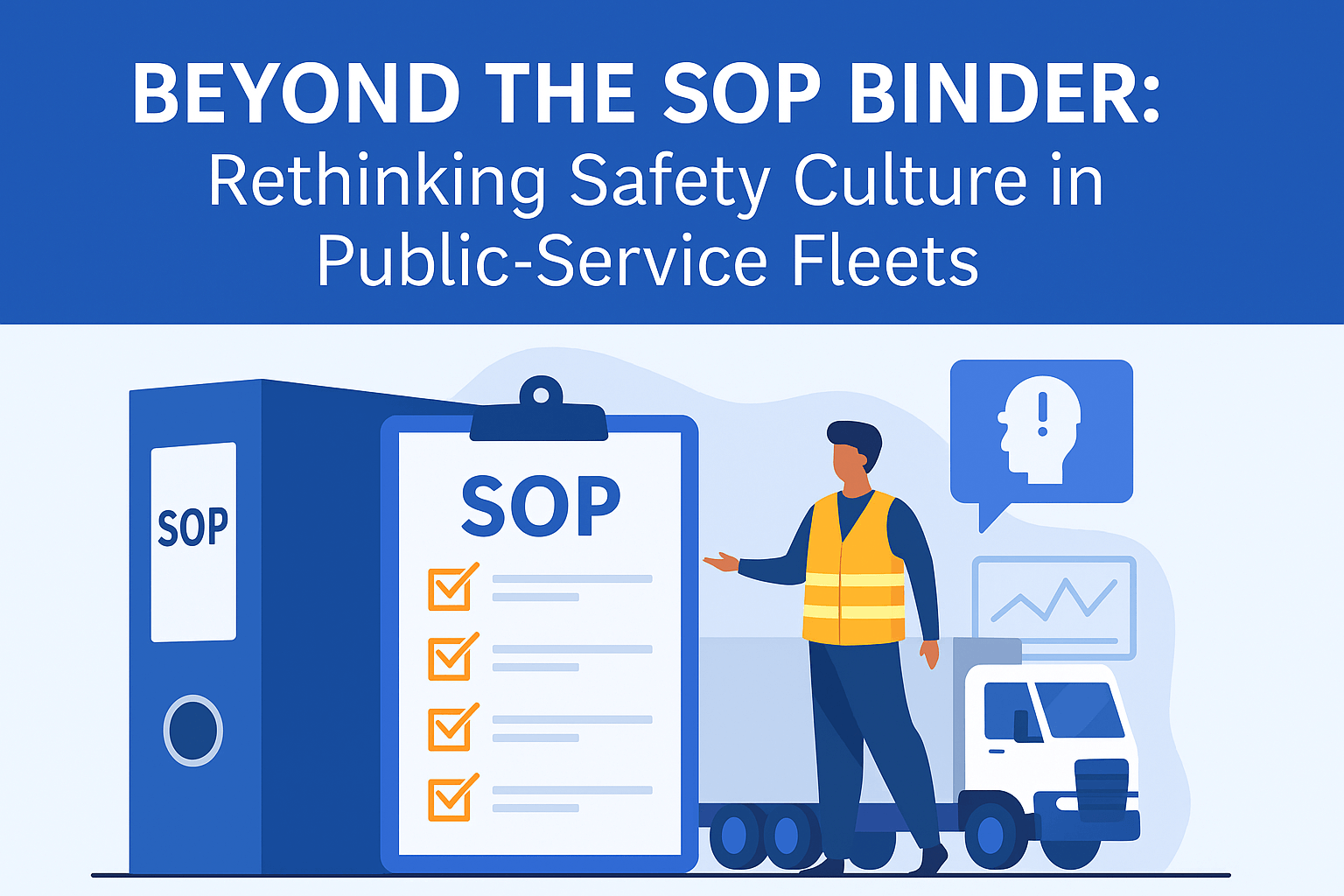
Are you tasked with implementing a company driver safety program, or aiming to strengthen an existing one? This guide simplifies the process, laying out clear, actionable strategies to improve driver safety, thereby reducing accidents, lowering operational costs, and safeguarding your most important asset—your employees.
Table Of Contents
- The Importance of a Company Driver Safety Program
- Identifying High-Risk Drivers and Behaviors
- Choosing the Right Driver Training Program
- Implementing the Driver Safety Program
- Monitoring and Improving Driver Performance
- Maintaining a Safe Fleet
- Building a Safety Culture
- Summary
- Frequently Asked Questions
Key Takeaways
- A company driver safety program significantly reduces accidents, enhances employee satisfaction, and mitigates financial and legal risks associated with vehicle incidents, necessitating comprehensive, continuous monitoring (like MVR checks) and targeted training interventions.
- Identifying and addressing high-risk drivers and behaviors through continuous monitoring, such as MVR checks and telematics, help in customizing training programs, improving fleet safety, and ensuring compliance with regulations.
- Implementing effective driver training programs involves careful selection of training modules, whether off-the-shelf or customized, regular assessment of driver performance, and integrating feedback for continuous improvement, while fostering a strong safety culture within the organization.
The Importance of a Company Driver Safety Program

More than just a formality, a company driver safety program is a strategic initiative that protects the company’s most valuable asset – its employees. Implementing such a program has several benefits:
- Reduces accidents and injuries
- Saves money
- Enhances employee satisfaction
- Mitigates driver risks, collisions, and liability for the company
It’s a personalized shield, ensuring the safety and well-being of both the drivers and the company.
But it doesn’t stop there. An effective fleet safety program, one that is comprehensive, up-to-date, and reaches every employee, forms the bedrock of a safe working environment, and shields the company from liability arising from vehicle-related incidents.
Why Companies Need a Driver Safety Program
Beyond posing a threat to life and limb, vehicle accidents also impose a significant financial burden, with companies incurring an average cost of about $70,000 per incident. In 2023, they were the leading cause of fatal injuries for employees, painting a vivid picture of the high-risk nature of driving. Companies, recognizing this, have set up Safety/Loss Control Committees to scrutinize such incidents, determining their cause and preventability. These committees can mandate personal meetings to discuss the accident, potential training needs, and possible disciplinary action.
What’s the takeaway? The exorbitant cost and damage caused by accidents underscore the need for a company driver safety training program.
Benefits of an Effective Driver Safety Program
An effective driver safety program:
- Mitigates risk
- Enhances safety
- Boosts employee satisfaction
- Ensures the safety of your drivers
- Enhances the overall efficiency of your fleet operation
But the benefits extend even further. A top-notch driver safety program can lead to reduced insurance premiums, thanks to a lower accident risk. And let’s not forget about driver retention, a crucial aspect of any successful fleet operation. A well-implemented driver safety program fosters a safer and more supportive working environment, a proven recipe for better driver retention.
Identifying High-Risk Drivers and Behaviors

Identifying high-risk drivers and behaviors is a crucial step towards improving fleet safety. And it’s here that continuous motor vehicle records (MVR) monitoring shines. Closing visibility gaps for violations that occur between annual license checks helps reduce fleet exposure to risky drivers. This improvement allows fleet managers to monitor driver behavior more effectively and take necessary actions to mitigate potential risks based on their driving record. This strategic measure doesn’t just enhance safety but also protects an organization’s reputation.
By maintaining up-to-date driver records, businesses can pinpoint high-risk drivers and ensure compliance with regulations. It’s also worth noting that loss leading indicators – unsafe driving behaviors that lead to common and costly accidents – are critical in identifying driver risk. This process can be further facilitated by categorizing health and safety risks such as compliance with laws, cognitive abilities, and management practices.
Moreover, it is important to include in fleet safety management all individuals who drive for the company, regardless of whether they use rental or personal vehicles for business purposes.
Assessing Driver Risks
Continuous MVR monitoring is essential for companies to accurately assess driver risks. This approach has been shown to lead to a 22% reduction in violations and a 14% reduction in crashes. But the data doesn’t stop at MVRs. Data from telematics can provide a comprehensive understanding of the risks associated with drivers, vehicles, and journeys.
The significance of this data analysis cannot be emphasized enough. It allows for:
- the effective customization of driver training programs
- creating targeted online risk assessments
- addressing specific tendencies to improve driving practices.
Addressing Unsafe Behaviors
Mitigating unsafe behaviors is a fundamental aspect of any driver safety program. A robust driver safety policy can significantly reduce preventable crashes, claims, and costs related to insurance premiums and litigation. This enforcement of driver safety policies ensures that safe drivers adhere to the rules that keep them safe on the road. But enforcement isn’t enough; it needs to be backed by constant monitoring.
Continuous MVR monitoring and real-time telematics alerts can close visibility gaps and allow quick intervention when drivers receive violations.
Choosing the Right Driver Training Program

Selecting the right driver training program is a nuanced process, involving careful consideration of:
- Desired outcomes
- Learning domains
- Training cycles
- Company-specific needs
Different learning domains – affective, cognitive, behavioral, and organizational – represent sequential and necessary stages in the learning process within a driver training program. Cyclical training approaches that target common accident causes and are tailored to a company’s specific needs are central to implementing driver safety programs.
Targeted training courses should focus on key areas including defensive driving, difficult driving conditions, and various other specific safety concerns. Comprehensive training programs aiming for behavior change should include experiential training with opportunities for practice and mastery of skills. A blend of in-person instruction and behind-the-wheel training proves most effective in bringing about positive behavior changes in drivers. Ongoing driver training that reinforces fundamental skills plays a significant role in reducing violations and preventing crashes.
In the investment decision, companies should weigh the costs of customizing curriculums versus purchasing off-the-shelf materials, with the understanding that labor hours for learning constitute the majority of expenses. To measure the effectiveness of driver training programs, companies can evaluate the difference in productivity, knowledge, and skills before and after training interventions. Selecting the right driver training program should factor in the number of drivers, vehicle types, annual loss costs, accident types, and specific training needs.
Evaluating Off-the-Shelf Programs
Off-the-shelf driver training programs offer a balance of addressing training needs while managing cost-effectiveness. Group training sessions that are off-the-shelf typically target common accidents, providing an effective training solution that is less expensive compared to more customized options.
Indeed, opting for off-the-shelf options can save time and reduce the costs associated with loss.
Customizing Training for Your Company
Customizing driver training requires a multi-pronged approach. It calls for engagement and leadership by example from senior management. It’s also crucial to set up training cycles that include self-directed online training at hiring, in-person training within the first week, monthly safety meetings, and follow-up training after incidents.
Importantly, the training should be easily understood, emphasizing techniques like evaluating traffic situations, maintaining safe distances, and positioning in traffic.
Implementing the Driver Safety Program

Implementing a driver safety program is a multistage process. It involves:
- Gaining driver buy-in for the new training program
- Emphasizing the benefits for drivers
- Maintaining transparency throughout the change process
- Conducting a trial run with a test group
- Collecting feedback
- Making necessary adjustments
By following these steps, you can ensure a smooth rollout of your driver safety program.
Although implementing driver training programs may seem challenging for companies, confronting these concerns directly can pave the way for successful adoption.
Assigning Training Management
Assigning training management to one person is a strategy that reaps dividends. Such a person is tasked with overseeing all aspects of the training cycle, setting goals, and implementing the program. This singular point of responsibility not only ensures accountability within the program but also helps streamline the implementation process and promotes better outcomes in driver safety training.
Running a Trial Run
A trial run is indispensable before launching a new training program. A trial run allows for the identification of potential issues before the full implementation of the program. To conduct a trial run, select a small, representative group of drivers.
Gathering feedback after the trial is essential to gauge the effectiveness of the training and to understand the participants’ experience. Making changes based on the trial feedback is crucial to enhance the training program before rolling it out across the company.
Monitoring and Improving Driver Performance

The process of monitoring and enhancing driver performance is continuous, rather than a one-off event. Telematics technology, which tracks metrics such as speed, idling time, and harsh braking events, offers valuable insights into driver behavior. Coupled with continuous MVR monitoring, decision-making for corrective actions based on driver violations and specific unsafe behaviors is swift and accurate. Regular, data-driven coaching discussions with drivers highlight the importance of safety and provide opportunities for personal improvement.
Tracking the effectiveness of driver training programs is crucial. Metrics such as:
- productivity
- sales
- profits
- behavioral changes in drivers post-training
can provide insights into the program’s impact. These outcomes, which include fewer breakdowns and increased on-time deliveries, speak volumes to the effectiveness of the program.
Tracking Driver Progress
Initiating a driver coaching program should begin with making driver data accessible to all members of the fleet. This transparency encourages a shared commitment to safety and progression. Effective driver coaching hinges on ongoing measurement and feedback.
Employing continuous MVR monitoring and real-time telematics allows for the prompt identification and rectification of risky driving behaviors. Tracking driver progress within training programs is conducted through metrics that include course completion rates and documentation of behavioral improvements over time.
Incentivizing Safe Driving
Incentives can be powerful motivators for behavior change. Recognizing safe fleet drivers is important to reinforce the importance of safe driving, set expectations, and hold fleet managers accountable. Some tangible incentives that can encourage safe driving practices among drivers include:
- Merchandise
- Gift cards
- Cash bonuses
- Additional time off
Highlighting and recognizing ‘Monthly Safety Stars’ in an organization promotes a culture of safety and acknowledges the achievements of drivers who reach safety milestones.
Maintaining a Safe Fleet
The collective responsibility of maintaining a safe fleet entails choosing safe vehicles and implementing a sound vehicle maintenance program. Regular maintenance of company vehicles is vital for preventing crashes and promoting safety, as well as minimizing repair frequency and overall maintenance costs.
It is important for companies to have a policy in place to ensure that all vehicles are consistently well-maintained and operating safely and efficiently. This helps to promote a culture of safety and reliability within the company. Vehicle maintenance files should be comprehensive, including basic vehicle information, inspection and maintenance due dates, and records of inspections, repairs, and maintenance.
Selecting Safe Vehicles
The selection of safe vehicles is a critical step in maintaining a safe fleet. Vehicle safety ratings provided by government agencies and independent organizations should be a key factor in vehicle selection. Vehicles equipped with advanced safety features such as automatic emergency braking, lane departure warnings, and electronic stability control offer additional layers of safety.
Selecting vehicles with a proven safety record, known for their structural integrity and accident avoidance capabilities, should be prioritized. Stay informed about recalls and safety notices, as they can significantly affect the overall safety profile of a vehicle.
Implementing a Vehicle Maintenance Program
A robust vehicle maintenance program is a non-negotiable part of fleet management. Routine preventive maintenance should be conducted at specific mileage intervals following the manufacturer’s recommendations and considering usage patterns. Preventive maintenance helps detect potential issues early and prevent breakdowns.
Annual inspections are necessary to ensure vehicles meet safety and performance standards. Proper resource allocation for effective execution of the maintenance plan includes:
- Skilled technicians
- Tools
- Parts
- Facilities
Encouraging drivers to regularly check tire pressure and promptly report any vehicle-related issues contributes to overall vehicle safety and maintenance.
Building a Safety Culture
Cultivating a safety culture forms an integral component of every driver safety program. A safety culture that incorporates a strong driver safety program is vital for enhancing driver performance, efficiency, and company protection against legal issues. Creating a safety culture in driver training programs is key to proactively protecting the team, reducing preventable crashes, and lowering costs associated with insurance and litigation.
A strong company’s safety culture is established when employees are deeply committed to the organization’s safety objectives and contribute to those outcomes through their actions and behaviors.
Communicating Safety Policies and Guidelines
Clearly communicating safety policies and guidelines is a must. A driver safety policy, detailing driver responsibilities, cell phone and seatbelt use, enforcement policies, and criteria for approved drivers, forms the backbone of the safety program. Effective communication ensures that employees are not only engaged but fully understand the safety mission of the company, which in turn supports the successful enforcement of the safety policies.
Having employees sign an agreement is a method of acknowledging that they are informed about and comprehend the safety policies, solidifying their commitment to adhering to these guidelines.
Engaging Employees in Safety Initiatives
Fostering a robust safety culture hinges on engaging employees in safety initiatives. Strategies to enhance employee engagement include:
- frequent communication
- learning opportunities
- feedback
- recognition
- commitment from top-level management
Regular driver meetings led by supervisors provide a forum to discuss issues, share news, and foster a platform for drivers to voice their questions or concerns. Assigning a manager who values driver input and collaborates with them on safety and business processes can lead to substantial improvements in the safety culture. Feedback and positive encouragement are integral to drivers’ learning and development, helping them to understand their achievements and areas for improvement.
Summary
In the journey we’ve embarked on, we’ve explored the significance of driver safety programs, the process of identifying high-risk drivers, choosing and implementing the right driver training program, and the importance of monitoring and improving driver performance. We’ve also delved into maintaining a safe fleet and building a safety culture. It’s clear that a comprehensive driver safety program is not just about reducing accidents and saving money; it’s about creating a safer work environment, fostering a culture of safety, and ultimately contributing to the success of the company. Let’s not just drive; let’s drive safely.
Frequently Asked Questions
What is the purpose of implementing a driver safety training program?
The purpose of implementing a driver safety training program is to reduce accidents, injuries, and save companies money. Training programs help to improve overall driving behavior, leading to safer roads and lower costs for companies.
Why are companies often hesitant to invest in driver training programs?
Companies are often hesitant to invest in driver training programs because they believe it’s challenging to implement. This perception leads to reluctance despite the potential benefits.
What is the most common cause of fatal injuries for employees in 2023?
Vehicular accidents were the most common cause of fatal injuries for employees in 2023. It is important for employers to prioritize safety measures for employees who operate vehicles as part of their job duties.
What are loss leading indicators in driver safety?
Loss leading indicators in driver safety are unsafe behaviors that contribute to the most common and costly accidents. Understanding and addressing these indicators is crucial for improving overall safety on the road.







